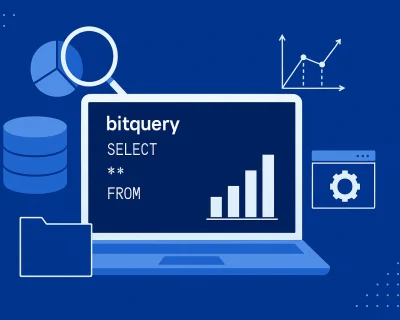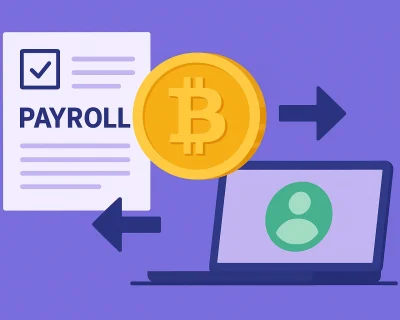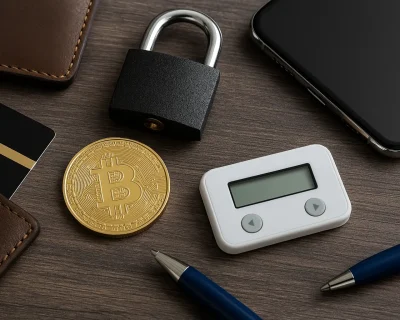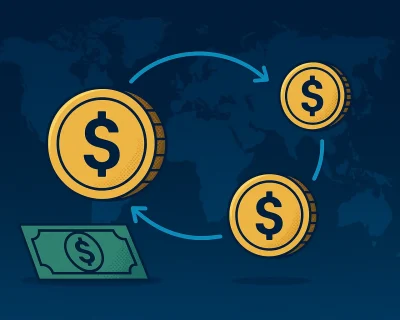An advanced guide to understanding the Functions of the NFT Economy
Non-Fungible Tokens (NFTs) are the new-age digital assets representing commodities such as artwork, collectibles, and virtual in-game items collected in virtual worlds like Decentraland. These tokens are often transacted online, frequently using bitcoin or similar cryptocurrencies. NFTs are typically encoded as smart contracts on a blockchain.
The public interest in NFTs peaked in 2021, with the market recording massive purchases. For instance, In March 2021, Jack Dorsey put his first first-ever tweet for sale in the form of NFT and racked up $2.9 million. A few days later, Christie’s sold a digital-only artwork by Beeple for more than $69 million. Such record purchases created a buzz in the market, with many looking to plunge into the NFT wave in 2022.
Key aspects of NFTs
Buyers and sellers of NFTs have to rely on cryptocurrencies. One way to start with NFTs is to understand cryptocurrency exchanges and buy cryptocurrencies that can be traded against NFTs.
But choosing the right exchange is crucial since each has different trading fees, trading terminals, and UI. For instance, suppose you’re considering the Bybit trading platform for your crypto needs. Being a novice, instead of just evaluating it on your own, it’s better to check Bybit reviews and reinforce your choice of the trading platform.
One can write off NFTs as just another fad, but it is vital to remember that NFTs were never designed to perform well in traditional investment structures.
Before we go any further, let’s go over a few key aspects of NFTs that will help you better appreciate their true potential:
Immutable Ledger
NFTs have cryptographic linking as they exist on the blockchain. They have traceability wherein the transaction ensures that it can be accessed by anyone with blockchain access as all future.
NFT transactions are stored in a linked list.
True content ownership
Users can store digital assets in a single NFT wallet until they trade them with another person.
Conditional rules for fair payment
If a certain percentage of secondary sales goes to identified manufacturers and distributors, it may pay expenses and defend against third-party arbitrage that undercuts primary sales. NFTs enable one to program conditions like these.
Creator economy
There is a sudden burst of creative influencers with the rise in the popularity of TikTok and Instagram Reels. These people can leverage their success by minting NFT to create digital equity for themselves with NFT. This way, we are expecting a new wave of NFT buyers and sellers leveraging the cryptocurrency and Decentralized Finance (DeFi) services that blend to create an unrestricted, low-friction creative economy that is far more powerful than before developing.
Uniqueness
Guaranteeing the product’s uniqueness in a physical world is difficult, but it gets tougher in the digital realm. But, with blockchain technology, NFTs guarantee that a digital asset will never be replicated.
Standardization
Standards are needed to make objects interchangeable amongst ecosystem participants and integrate them into business processes. These digital ecosystems are built on the ERC-721 and EIP-721 standards.
Tamperproof
The tamperproof aspect of the NFT is closely related to the blockchain, which is a critical feature that helps build trust in digital commercial connections. With tamperproof programming based on standardized logic, NFTs cannot be altered by first, second, or later owners.
Functioning of NFT economy
Putting aside all the NFT hype, let us consider how real-world applications work with NFTs. It provides newer ways to manage and sell products in digital ecosystems for businesses.
When products are shared or traded as part of a cooperative value-creation process, they may positively impact the blockchain industry in the long run.
Let us check the key factors that contribute to the rising NFT economy.
Discord Community
Most of the NFT projects’ communication happens over Discord. This portal is reminiscent of the old-school chat rooms. Individual servers are set up for each project which acts as a central hub for various aspects of the project. When you join the BAYC Discord server, you may join the “sports-bar” channel to speak about basketball with other members.
Discord is also a great platform for organizing both online and offline events. Before such meetups, individuals would upload, create avatars of themselves with colored hair, or exhibit a new tattoo as a testament to their loyalty to their NFT group. When an online mee takes place, they are generally organized around a subject in audio Discord channels.
Democratized digital assets
As the price of NFTs continues to skyrocket in the media, its market is democratizing the production and trade of digital assets. NFTs hold potential for both creative and commercial use as creators, digital artists, developers, and businesses are up there to leverage the growing market for a range of digital assets.
Also, there are many platforms, such as Curate, Solsea, OpenSea, etc., to create and sell digital goods. It is just a matter of time until we see several unique assets created and sold. This is the real promise of NFTs — the assurance of safe transactions permanently recorded on the blockchain regardless of how often they change hands.
NFTs eliminate restrictions for both artists and collectors, establishing a whole new realm of digital material that can be purchased and traded instantly anywhere around the globe.
Addressing predicaments of digital content
Nowadays, we see many celebrities and content creators making announcements on new inroads into NFT content. These are strong increased activity signals showing no signs of a slowdown.
NFTs build a genuine value for digital content by generating and enforcing an actual scarcity while rewarding uniqueness. Digital objects are simpler to copy than physical stuff, particularly on open platforms.
But, with blockchain-backed NFTs, it is easy to recognize the source of a digital asset. In turn, it helps create a limited number of chains from that source, with each copy tracked individually. There is no limit to the number of copies made by referencing the blockchain transaction documenting their creation.
As a result, it is possible to check the relative rarity of a certain number of duplicates for every given account or wallet. You can also gauge the rarity using rarity tools. To put it another way, if you one replica, say #46 from the collection of 10,101 Metavaders with a registered copy of the NFT asset, then implies there are only 10,100 more other people out there.
Profits creators
The hashing technique is a mathematical activity used by the hosting platform to verify the underlying NFT art by creating a unique digital fingerprint. The integrity of purchased or on-sale digital assets is possible by integrating the digital fingerprint with a thumbnail picture record. This is useful for reverse search identification as a recognized content registry.
Moreover, Third-party vendors have previously been able to profit from selling items and content at the cost of original content producers. Imagine how a business like GameStop would resell games without letting the game’s developers make money out of it. NFT can solve this issue.
The creator and the distributors can encode in the NFT logic that a proportion of future sales comes back to them. A secondary seller keeps a larger share of income from the sale of their asset. But the royalty is passed on to the original creator, who benefits from a subsequent increase in the asset value.
The road ahead
NFTs are currently offering a range of new options for content producers, in particular, to promote their work via digital ecosystems. As discussed above, the larger part of NFTs in the future will rely on engagement in secondary trading over the long term. The use of blockchain technology as infrastructure and Decentralized Finance (DeFi) to conduct economic transactions are essential to market growth.
At its core, NFTs will harness the power of DeFi that blends with the participants in an ecosystem that values integrity and uniqueness. In turn, this will ensure populating of cryptocurrencies into the NFT market without relying on a centralized intermediary or market operator. People who work in almost every industry that sells real and digital goods can leverage this.
NFTs are more likely to be the future of content than a short-lived craze. Content creators, networks, and markets get a boost from the technology. On the other hand, customers and fan groups get a massive increase in personal branding.













